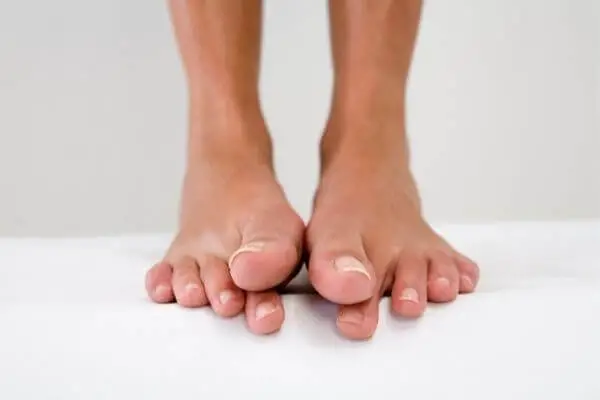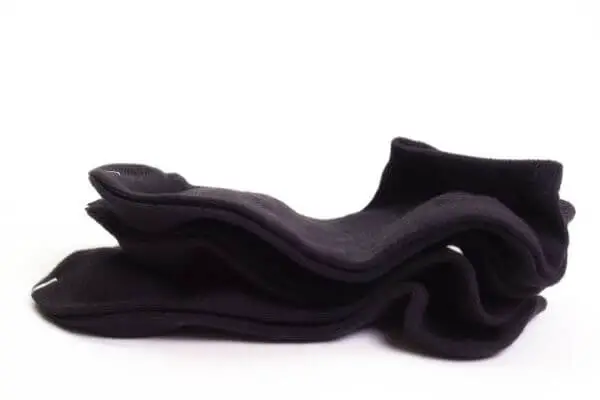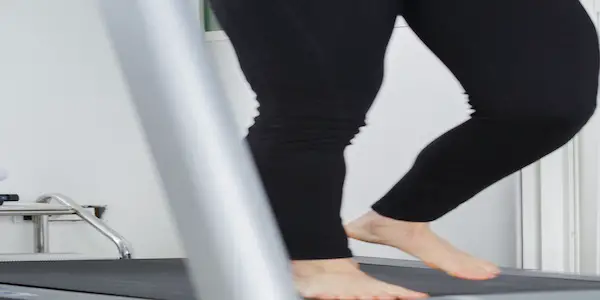If you’ve ever been to the gym, chances are you’ve seen someone running barefoot on a treadmill. You might have even wondered if they were crazy. But as it turns out, running barefoot may be better for your feet than wearing shoes. A growing body of research suggests that going shoeless can help to improve your running form and reduce the risk of injuries.
So the next time you see someone running barefoot at the gym, don’t be too quick to judge – they might just be ahead of the curve.
This article explores the benefits and drawbacks of running barefoot, giving you some good tips for running safely without your shoes. Keep reading below!
Table of Contents
Benefits of Barefoot Running

There are many benefits to barefoot running, and more and more people are starting to ditch their shoes in favor of this natural form of exercise.
Stronger Leg Muscles
Without the support of shoes, your feet and legs have to work harder to propel your body forward. As a result, you can have stronger muscles in your feet, ankles, and calves. In addition, running barefoot can also help to improve your balance and coordination. With nothing but your own two feet to rely on, you’ll need to pay close attention to your footing. As a result, you may find that your overall balance and coordination improve over time. So next time you head out for a run, consider leaving your shoes at home!
Efficient Run
For years, runners have been told that the best way to run is with shoes that provide plenty of support and cushioning. However, recent research has challenged this thinking, and many runners are now turning to barefoot running as a more efficient and smooth way to run.
One of the critical benefits of barefoot running is that it helps you land on your mid-foot or fore-foot rather than your heel. This gives you a much smoother stride.
In addition, barefoot running forces you to run with a shorter stride, which also makes for a more efficient running style.
So if you’re looking for a more efficient and smooth way to run, ditch your shoes and go barefoot. Your body will thank you for it!
Better Balance and Coordination
Without the cushioning and support of shoes, the feet can make direct contact with the ground, providing feedback that helps the brain better understand the position of the body in space. This can lead to better coordination and a reduced risk of injury.
Additionally, barefoot running encourages a more natural stride, reducing the impact on the joints.
Improved Memory
According to a 2016 study, barefoot running may help to improve memory function. The study found that participants who ran barefoot had better working memory than those who ran with shoes.
The explanation is that barefoot running requires greater focus and attention.
When running barefoot, you need to pay attention to your surroundings to avoid stepping on sharp objects or uneven terrain. This increased focus and awareness may improve memory function.
In addition, barefoot running has also been shown to increase brain activity in the regions responsible for memory and learning. As a result, barefoot running may be an effective way to boost memory and cognitive functioning.
Disadvantages of Running Barefoot

While there are many benefits to running barefoot, there are also some potential drawbacks that you should be aware of.
Injury
One of the most obvious dangers is the risk of cuts and abrasions on the feet. Without shoes to protect them, your feet are vulnerable to all sorts of objects on the ground, including sharp rocks and broken glass.
If you’re running barefoot on the treadmill, beware; the belt can get pretty hot.
Consequently, you can get burnt on the bottom of your feet if you’re not careful.
Muscle Strain
Another risk is that barefoot running can stress the sole muscles without working out the heels. This stress can cause the muscles and tendons to become overworked and stiff.
Additionally, barefoot running can lead to heel pain because the heel is not being supported by shoes.
If you experience any pain or discomfort while barefoot running, stop and rest. Ultimately, barefoot running is a healthy activity, but listening to your body and taking breaks when needed are essential.
Can You Run Barefoot on a Treadmill?
Some say yes, citing the benefits of running barefoot on soft surfaces. Others say no, warning of the dangers of running on hard, uneven surfaces. So who’s right?
The answer may surprise you.
Although there are risks associated with running barefoot on a treadmill, it is possible to do so safely if you take the necessary precautions.
- Ensure that the treadmill is calibrated correctly and that the belt is not too tight.
- Start slowly and increase your speed gradually.
- Stop and take a break if you feel any pain or discomfort.
With a little careful planning, you can safely enjoy the benefits of running barefoot on a treadmill.
Can You Walk on a Treadmill Barefoot?

Walking barefoot on a treadmill can be risky, as you are more likely to slip and fall. Additionally, the unforgiving surface of the treadmill belt can be tough on your feet.
However, walking on the treadmill is safer than running on a treadmill without shoes because:
- You’re less likely to lose your balance.
- The band is less likely to get hot.
Remember to take these precautions, though:
- Warm-up thoroughly before getting on the treadmill.
- Start at a slow speed.
- As you become more comfortable, you can increase your speed.
- Pay close attention to your footing at all times.
- Grab the handrails if you start to feel unsteady.
With a bit of practice, you’ll be able to walk barefoot on the treadmill like a pro!
How Can You Prevent Injuries from Running Barefoot on the Treadmill?
Whether you’re a die-hard fan of barefoot running or just looking to add a new challenge to your treadmill workout, it’s essential to be aware of the risks associated with running barefoot on a treadmill. While the padded surface of a treadmill may seem like a cushioned landing for your feet, the reality is that the belt can move quickly and without warning, which can easily lead to a fall.
In addition, the incline feature on most treadmills can pose a danger for barefoot runners, as it can cause the foot to slip off the back of the treadmill.
To avoid injuries, start slowly and be extra cautious of your surroundings. And as always, listen to your body and stop if you feel any pain.
Can You Run with Socks on a Treadmill?

If you’ve ever wondered whether you can run with socks on a treadmill, the answer is yes… with a few caveats. Socks will help protect your feet from the friction of the treadmill belt, but they can also make your feet more slippery.
As a result, you’ll need to be careful to maintain proper form and footing while running.
In addition, running in just your socks can cause blisters.
Ultimately, whether or not you choose to run with socks on a treadmill is a matter of personal preference. However, if you decide to run with just your socks on, keep an eye on your form and footing.
Can You Wear Flip Flops on a Treadmill?
There are a few things to consider before deciding whether or not to wear flip-flops on a treadmill.
- Your shoes impact on the treadmill belt. Hard-soled shoes can cause the belt to wear down more quickly and make more noise. Besides, the lack of cushioning may hurt your feet, ankles, hip, and lower back.
- Your safety. Wearing flip flops on a treadmill could increase your risk of injury if you trip or fall.
- The effect that your shoes will have on your workout. If you’re planning on high-intensity training, wearing flip flops is probably not the best idea. However, if you’re just planning on walking at a low speed, flip flops may be acceptable.
Wrap Up
In conclusion, there are many benefits to running barefoot on a treadmill. Not only does it improve your balance and coordination, but it also helps to strengthen your muscles and joints. Additionally, it can increase your range of motion and improve your memory.
However, it is essential to start slowly and increase your mileage gradually to avoid overuse injuries. With a bit of practice, you’ll be running barefoot on the treadmill like a pro in no time!
- 7 Exercises for Pregnant Women in the First Trimester: Safe and Effective - January 30, 2025
- Our equipment recommendations - October 30, 2024
- Here’s What Doing Cardio Every Day Does To Your Body - August 21, 2024

